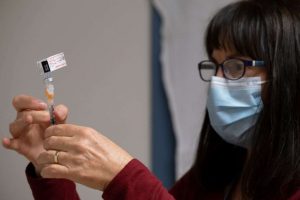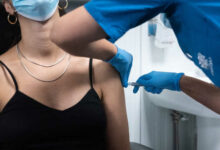Why is there no flu amid so many COVID cases? Your COVID-19 questions answered

Why is there no flu but so many COVID cases?
According to the Public Health Agency of Canada’s most recent weekly Flu Watch report “all indicators of influenza activity remain exceptionally low for this time of year.” In fact, there were no laboratory detections of influenza in the first three weeks of 2021.
Flu cases in Canada ‘exceptionally low’ so far, public health says
So why are flu numbers so low but COVID-19 cases surging in many parts of the country?
There are a number of reasons.
“Influenza is way behind the eight ball here,” said Dr. Gerald Evans, chair of infectious disease in the department of medicine at Queen’s University in Kingston, Ont., in a recent article.
For one, SARS-CoV-2 — the virus that causes COVID-19 — is more prevalent because it got a head start, settling into communities before flu season got going.
Experts also credit the public health measures taken to slow COVID-19 — the hand washing, physical distancing and mask-wearing — as well as the dramatic drop in international travel.
Dr. James Dickinson, a professor of family medicine at the University of Calgary’s Cumming School of Medicine, who also runs the Alberta community influenza surveillance program, said that other countries are seeing the same trend.
“We’re not getting any [flu] coming in because we’re just not getting enough people arriving, bringing the flu with them,” he told the Calgary Eyeopener, adding that the places they’re coming from don’t have any flu either.
In addition, many Canadians heeded the health warnings to get their flu shot. Although Canadian provinces ordered almost 25 per cent more flu shots than last year, many struggled to keep up with demand.
When it comes to testing, the PCR tests for COVID-19 detect the virus’s genetic material, so they won’t be tricked by a case of the flu, and vice-versa. Health Canada says a suspected case of the flu becomes a “lab-confirmed case” only after certified lab personnel tests a sample and confirms that the flu virus is present.
Have a question or something to say? CBC News is live in the comments now.
Why aren’t vaccine providers wearing gloves?
While you may see vaccine providers wear personal protective equipment — medical masks, gowns, face shields or goggles — you won’t always see them wear gloves.
That’s because gloves are not a part of routine infection control practices when delivering most forms of immunizations.
According to the Public Health Agency of Canada (PHAC), gloves are “not recommended” unless the vaccine provider’s skin is broken, like with cuts or blisters, for example, or when administering certain kinds of vaccines, such as smallpox.

The advice is the same in the U.S. with the U.S. Centers for Disease Control advising that gloves aren’t necessary unless vaccine providers are “likely to come into contact with a patient’s body fluids.”
Instead, vaccine providers are required to perform hand hygiene measures before vaccinating each person, such as washing with soap and water or using alcohol-based hand sanitizers, and whenever the hands are dirty.
If gloves are worn, PHAC says they should be changed between each vaccine recipient.
The important point to note is that the virus that causes COVID-19 can’t be transmitted via skin-to-skin contact, said Dr. Sumon Chakrabarti, an infectious diseases physician at Trillium Health Partners in Mississauga, Ont.
“Obviously health-care workers should wash their hands before doing a procedure of any kind,” Chakrabarti said in an email, but for COVID precautions “the highest-yield interventions are to physically distance, wear masks when indoors, and ensure good ventilation.”








Redes Sociais - Comentários